Take a wild guess – what could be the silliest question that one can ask ace cinematographer / director Santosh Sivan.
Especially when, being one among the busiest Industry professionals, whose comeback film in Malayalam Jack and Jill is ready for release – he is not likely to give you much time.
Top of that, in all likelihood, staying at home for such an extended period might not have augured all too well with a person, who, in the first place, became a cinematographer because he likes to travel.
Yes, these conditions demand you might have one question to sneak in, maybe two.
Hold your breath!
I had this brilliant idea of asking him about his top choices in terms of films that he thinks everyone should see; films that have really impressed and had a long standing impact on him – and maybe defined his style, to some extent.
And with that, all my claims of being a seasoned journalist went for bungee jumping without a rope. The discussion took a turn that I should have foreseen. Scores of directors with hundreds of films among them; but yes, with one common thread. Each one of them is a master in visual storytelling.
Had to be, I was talking to one of the most prolific visual storytellers of our time.
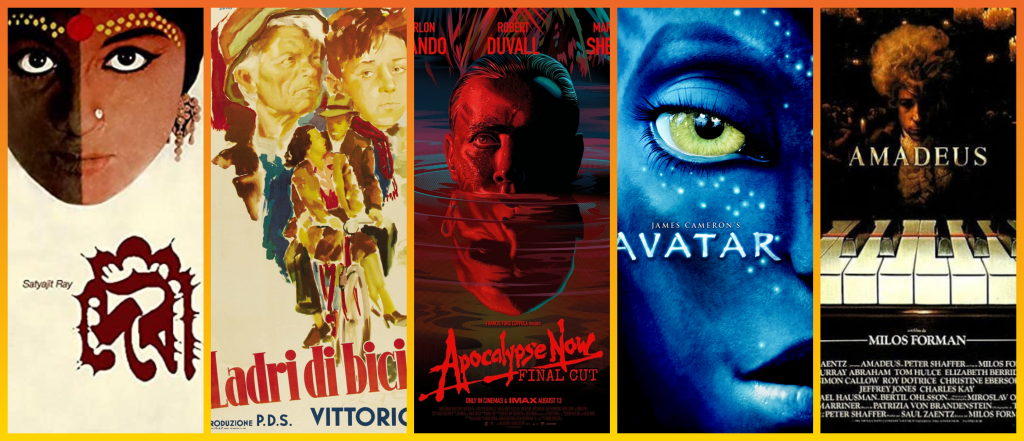
At this stage the discussion went overboard with him rattling out names in quick succession, in a manner that resembles a heady combination of feeling helpless and breathless at the same time.
Let me list down a few; Tarkovsky; Bergman; Bertolucci; Kurosawa; Kubrick; Hitchcock; Coppola … and films like Citizen Kane and Taxi Driver etc etc etc.
See what I meant; wrong question!!!
But yes, the common element in all his top five films is their breathtaking visual quality; evidently, that’s what appeals to him the most.
This might have something to do with the fact that he was born in a family where cameras were commonplace. Senior Sivan, his father, remains one of the pioneers of photo-journalism in Kerala, who later turned into a niche film-maker. In many of his interviews, Santosh Sivan has recounted how, during his school days, his grandmom, a painter, introduced him to the paintings of Raja Ravi Varma, by weaving mythological stories around them. That was, by his own admission – his first visual education.
During school itself, he also discovered his affinity with nature. It’s a fascinating story how he did that – and how that shaped him into being what he is today.
I got these inputs from a long interview he gave recently to Film Companion South, with due permission from eminent Film Critic Bharadraj Rangan.
Santosh Sivan believes in first-hand experiences; like if he reads about some place – he also likes the idea of going and visiting that place. He wants the experiences for himself – because that gives him his own perspective of what it is all about.
That, and a keen survival instinct – comes together to shape his aesthetic sensibilities. I do feel, from whatever I have read about him, that he never really wanted to become an isolated art-house photographer – but wanted to weave in his sense of beauty and awe into commercial images. In a nutshell, he wanted to have fun, live his life in his own terms, and make some money out of it as well; makes sense.
Even while in FTII, Pune, he used to take cameras to the next door Kamla Nehru Park – and take photographs of children playing. He found out a way of selling those photos to their parents and earning some cash – to fuel his travel ambitions.
Perhaps one of his the best early expression of this fascinating combination of art and commerce remains Mani Ratnam’s cult classic Thalapathi. This is where he molded his aesthetic sensibilities with the requirements of the script – and the results were breathtaking, entirely standing out in the crowd.
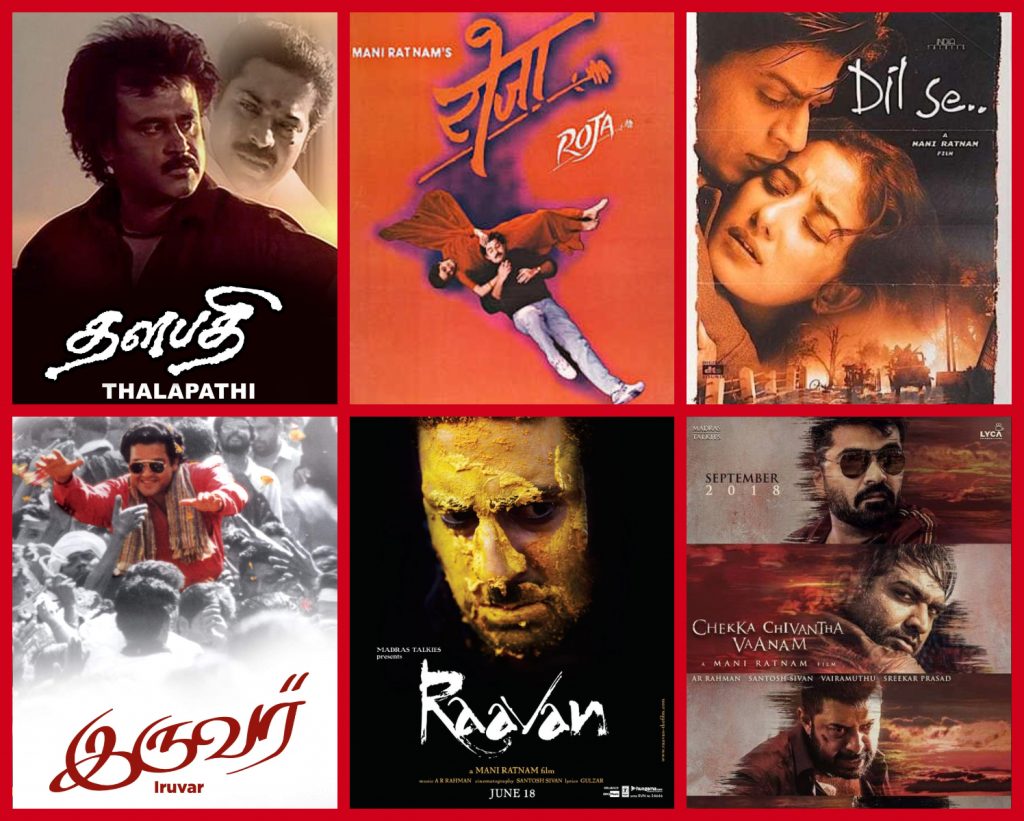
But does he have a ‘style’? And does he try to break it consciously, sometimes?
Getting back to all of Santosh Sivan’s Mani Ratnam films (or his own films, for that matter) – every film has a different cinematographic expression – but somewhere it stands out as his work too. That must be a tough thing to achieve.
In fact I recently read a lovely piece on Scroll about his long time association with Mani Ratnam, where he described in detail how every film they have done together threw up a different challenge. If interested, you can find the link HERE.
Yet, he somehow manages to leave his signature in everything he does.
Yet another obvious query is about his core domain – the visual language.
Santosh Sivan’s storytelling comes across as if he is writing it with his camera. It’s evident in the way he picks his subjects, lights up his characters and space, as well as how he develops the flow or the progression of the storytelling in films he directs.
Much could be said with just visual suggestions that cannot be described in a thousand words – and his own films stand testimony to that, all the way.
But is that a conscious choice – or just an ingrained habit?
I somehow have this habit of pushing in an ‘editing’ question in all my talks with everyone. Makes me often think I am in the wrong vocation – instead of cutting words I should have been cutting films by now. Or maybe, this passion for the ‘cut’ gives a cutting edge (snigger!!) to the scripts I write – because it’s always written to visuals, and with an eye for the editing techniques that would go with it.
Anyways, this is not about me. It’s about how I did end up asking Santosh Sivan about his perspective – on whether the cinematographer should have a fair idea about what the editor wants from him.
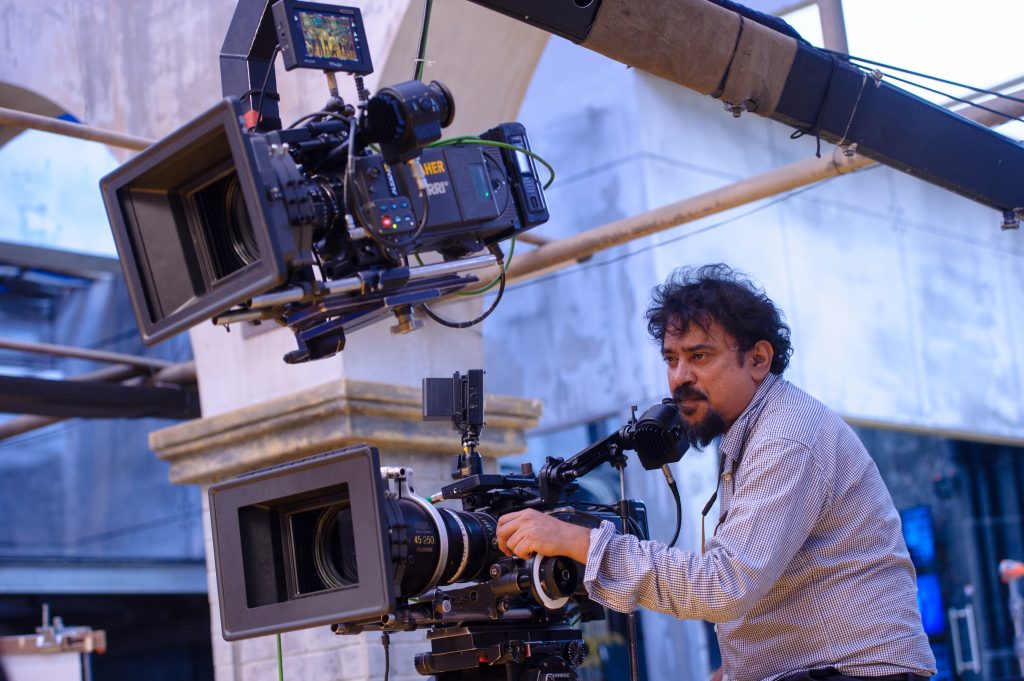
Things are changing; now everybody has a phone-camera, and a way to feel special in social media. For someone who has spent more than three decades in the industry dabbling with probably the best of equipments – how does he feel about this change?
Let me frame that question again – is it really necessary to have high-end equipment to shoot the most effective of images? And also, in our ongoing world of rampant photo-shopping and high-intensity VFX – what is happening to the purity of the image?
What would be his advice to upcoming cinematographers – who often have to hear that the art of cinematography is dying – or already dead?
For myself, I have often faced this dilemma. Young cameramen, with whom I usually work in my docu-projects, majorly go for what they call ‘neutral’ mode while shooting – gives a kind of visuals that looks like skins of zombies hung out to dry in top-sun. And it’s not that they are using low-end cameras – what we use is the best in the business.
When they show those images to me during shoots, I am often aghast, but they assure me – ‘It’s fine sir, this helps us to do the color correction later during editing. As a result, we will get uniform colors in the film!’
That might be on-demand, but is that ‘real’? Can they later match the colours that they saw on location – do they even remember it while at the post-production? And then, do we really need uniform colours in a film? I really don’t know.
That’s old school; my school, if I may dare to say so.
Before I end this post, my heartfelt thanks again, to eminent Film critic Bharadraj Rangan – for allowing me to use excerpts from the Film Companion South interview. Also, many thanks Santosh Sir, for pointing me to his direction. That interview was so extensive that it was really no use going through all my questions, which were similar, all over again.
For those of you that might be interested to go through that 50 minutes interview, here’s the link, pasted below. I would earnestly request you to find some time to do that – since it’s loaded with priceless gems.
And yes, thanks Sanjeev Sivan, my friend and director, for putting me across to your brother. Now there’s a lot WE need to do together – let’s brace up.
Finally, like many of you, I am waiting too for the release of Santosh Sivan’s latest film – Jack and Jill. This is his eagerly anticipated return to Malayalam cinema – and I would love to see how he has integrated his signature style (while keeping it different) in the making of this film; worth waiting – for sure.
I picked this image from Santosh Sir’s instagram post – I sure hope he doesn’t mind.
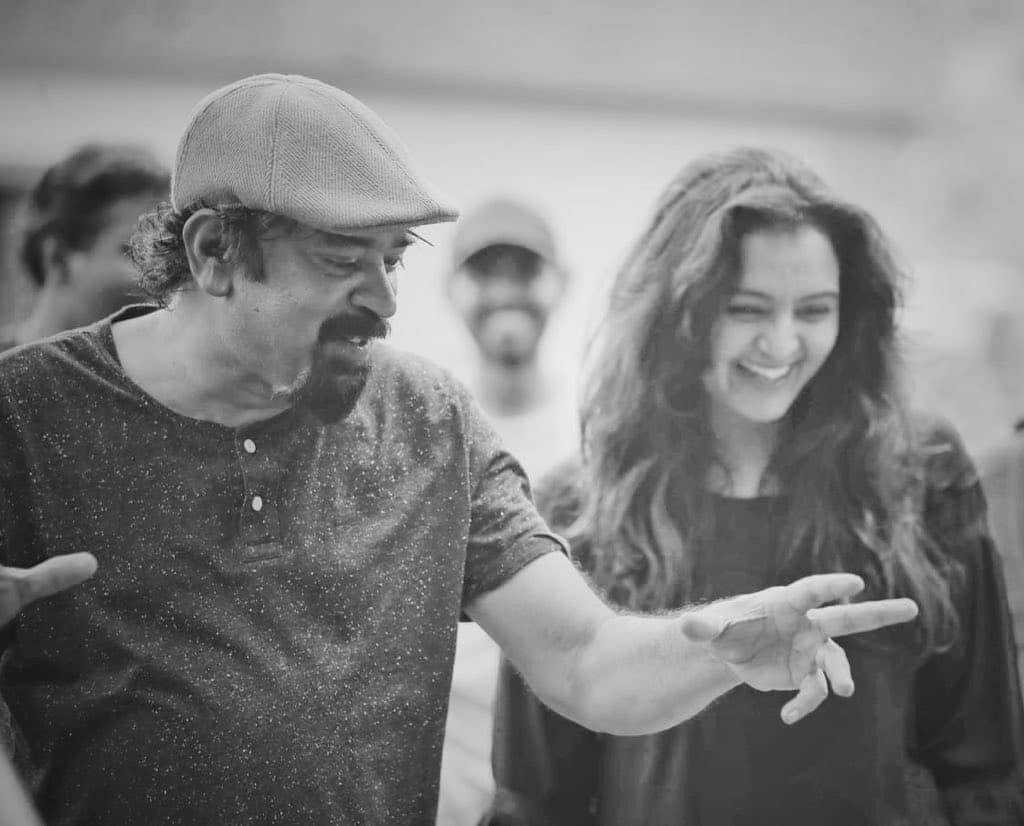

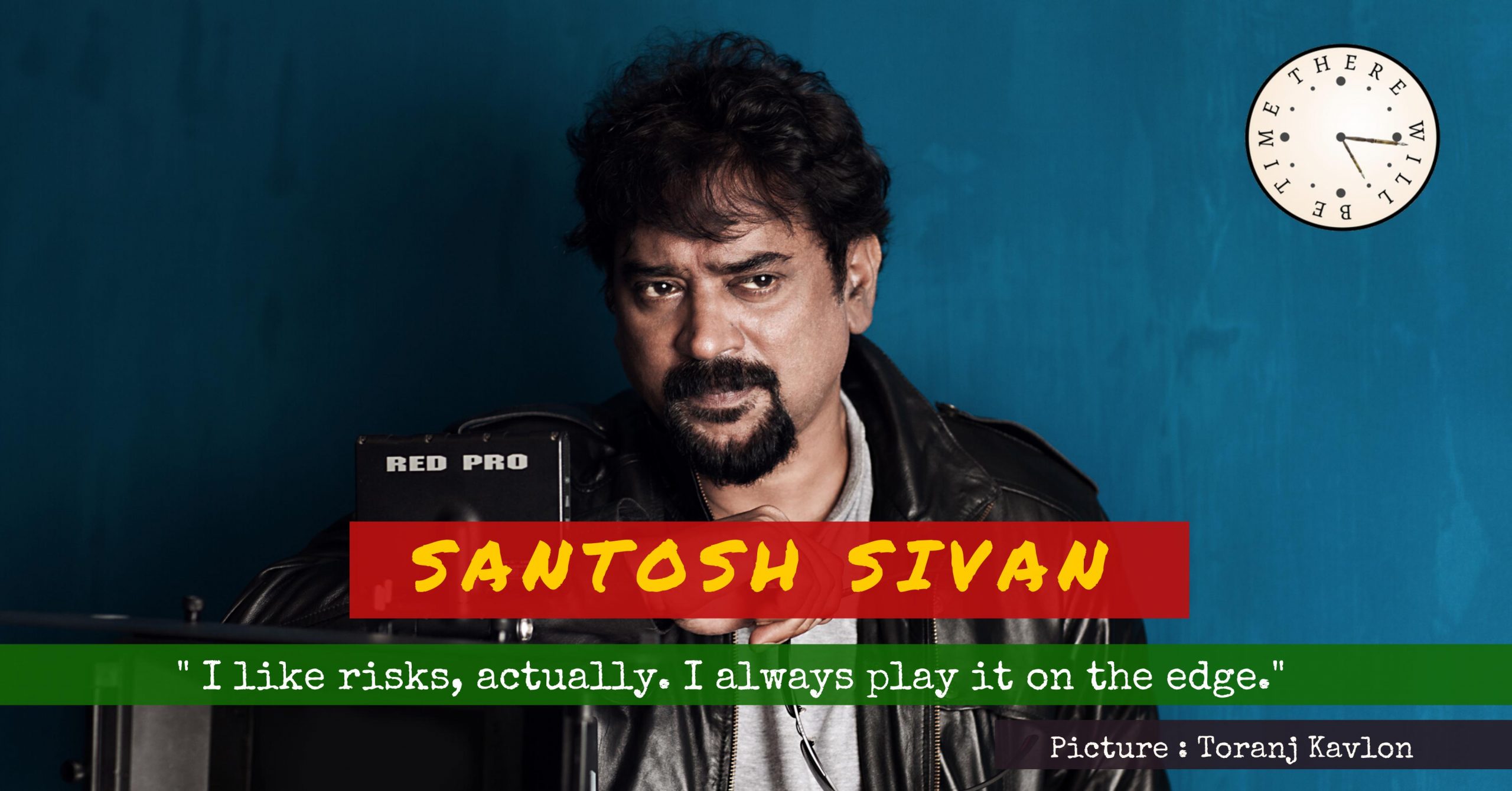

Enjoyed reading it